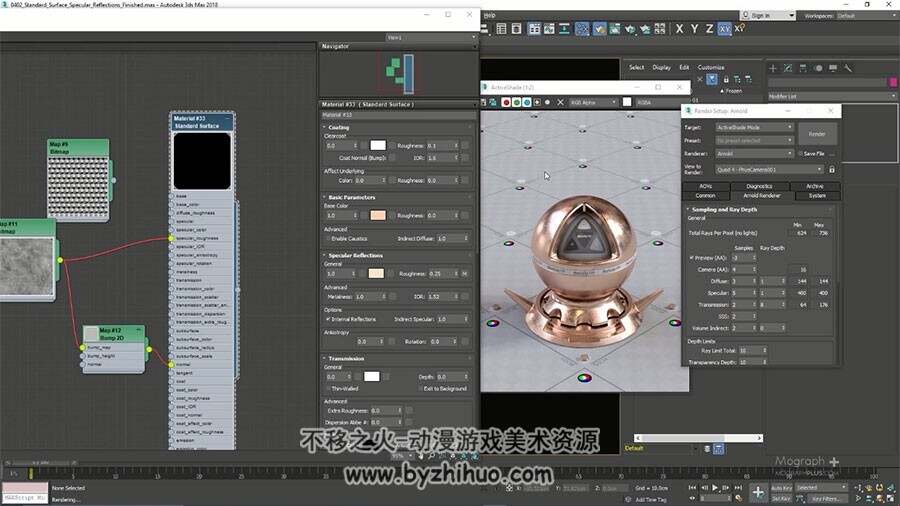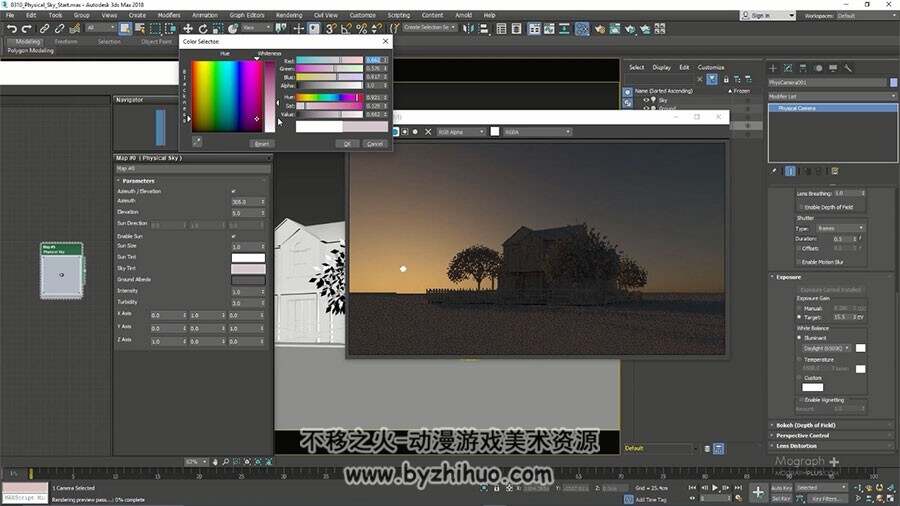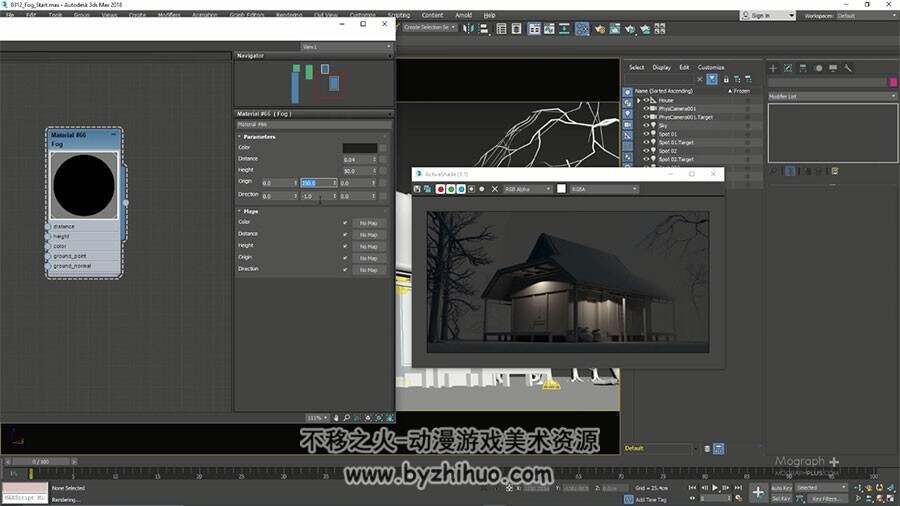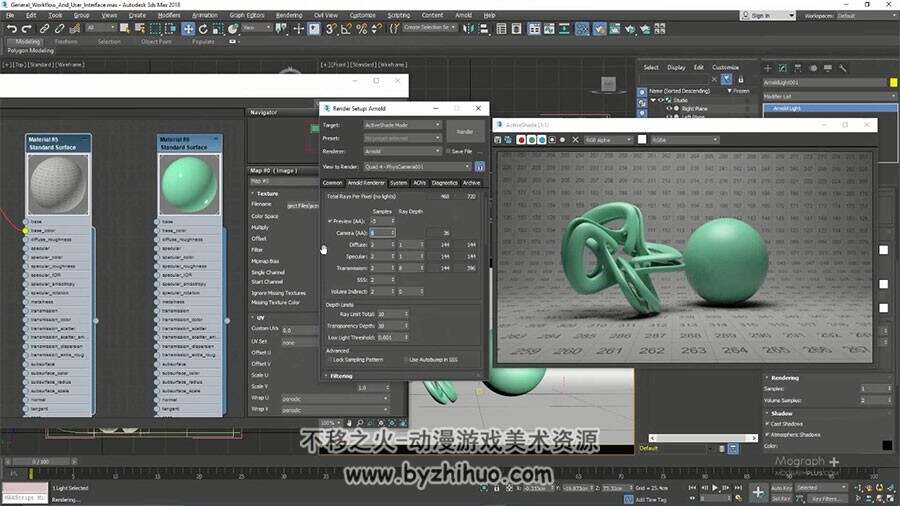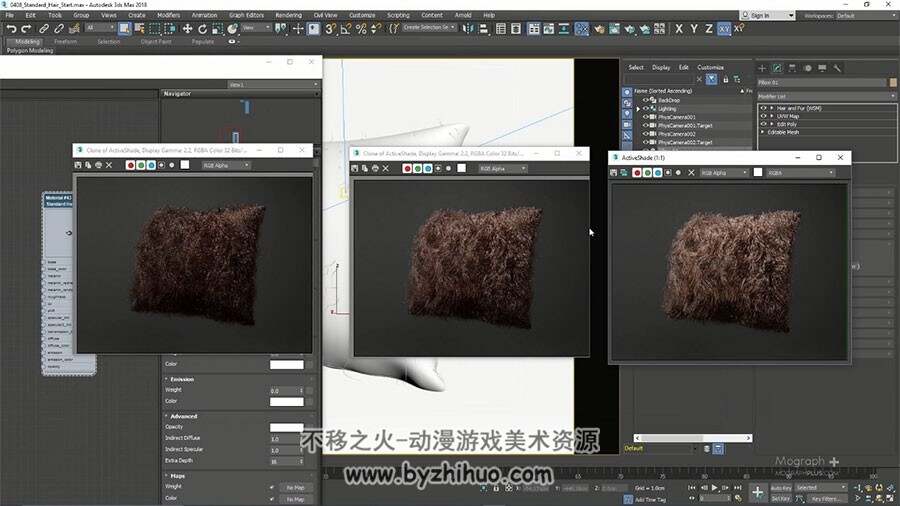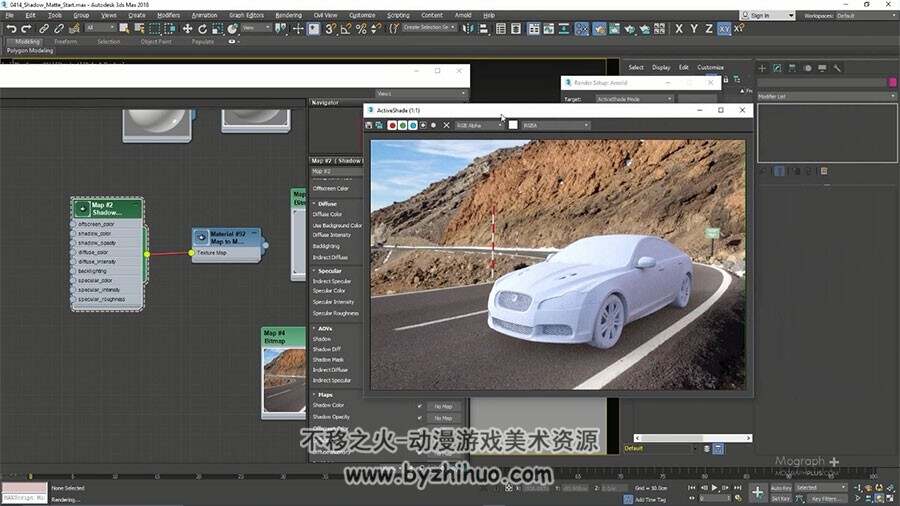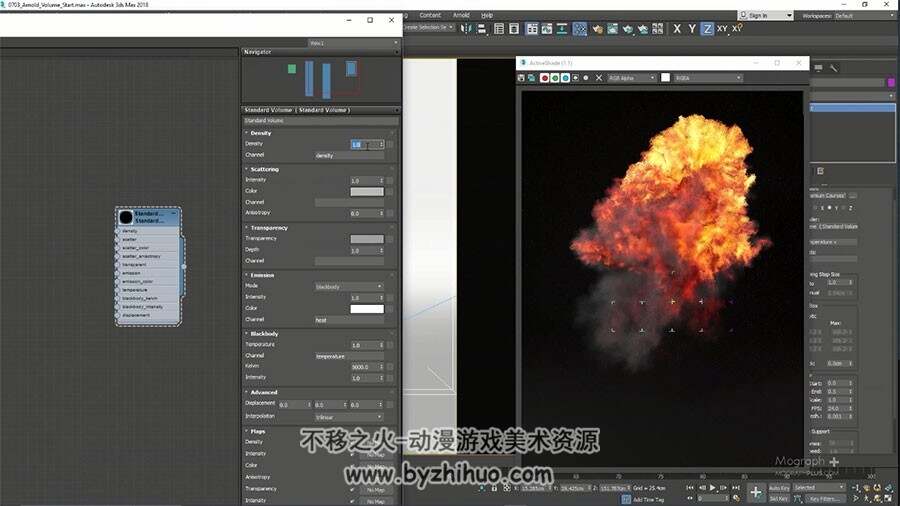3dsmax Arnold渲染器视频教程 综合使用技术教学视频 附源文件
 格雷尔的小剪刀
2019-7-12 13:10
浏览量:1176
回复量:2
格雷尔的小剪刀
2019-7-12 13:10
浏览量:1176
回复量:2
In this series of premium video tutorials in 8 hours and 35 minutes, that’s more than 500 minutes of tutorials, we learn how to use Arnold for 3ds Max.
First I show you where to find different Arnold tools and functions inside 3ds max, and walk you through the general workflow to get your job down with Arnold inside 3ds Max.
Sampling and ray depth are the most important principles that you should be familiar with when working with Arnold, that’s why we discuss them comprehensively in 57 minutes and in 7 lessons , we make sure you comprehend the core principles before moving on to more general topics like lighting and shading .
The next section of the course is dedicated to lighting , we learn about different lights in Arnold and different lighting techniques , we learn about Area Lights . spot , distant and point lights , mesh and photometric lights .
We learn what are light filters and how to use them , what is physical sky, SkyDome Light and image based lighting , you learn how to approach interior lighting in Arnold for 3ds max.
We learn about amazing volumetric effects in Arnold, including Atmosphere Volume and fog .
The lighting section of this course is about 1 hour and 55 minutes in 12 lessons.
In the next section of the comprehensive introduction to Arnold For 3ds Max, we start talking about Arnold materials and maps
First we learn about Standard Surface material which is the main material in Arnold and capable of creating all sorts of materials, we dedicated 5 videos in 80 minutes to discuss Standard Surface material thoroughly.
Then we discover bump and displacement mapping in Arnold. We explore Standard Hair material in a lot of details, this material lets you realistically create hair shaders, the Standard Hair is fantastic, and definitely one of the best hair shaders out there .
Then we learn about ray-switch , ambient occlusion, curvature, flakes , wire frame , utility , flat , lambert , two-sided and shadow matte shaders.
And then we take a closer look at the remaining materials and maps in Arnold, we learn about different color nodes , conversion , math and shading state nodes , we learn how to use utility nodes and hopefully after watching this section, you should be very comfortable developing complex materials using these long list of materials and maps .
The material section of this course is more 3 and a half hour in 18 lessons.
Then we take a look at 3ds max’s Physical Camera and how Arnold supports it, we learn about different camera features, we explore how to achieve camera effects like depth of field and motion blur.
In about 35 minutes and in 3 lessons we learn all about Arnold and Camera.
In the section 6 of the course we learn how to render our scenes in Arnold for cinema 4d, we learn about AOVs. What are the AOVs that Arnold offers and how to export and composite them in a composting app like After Effects. Then we learn about custom AOVs and how to write them out. After that we discover different render settings in Arnold.
The rendering section of the course is about 51 minutes in 2 lessons.
In the final section of the course we take a closer look at Arnold Properties Modifier and Arnold procedurals, and finally we learn about Arnold volume , we learn how capable Arnold is in handling openVDB files and rendering them realistically , we show you all the steps you need to render openVDB files in Arnold .
The final section of the course is 30 minutes in 3 lessons.
